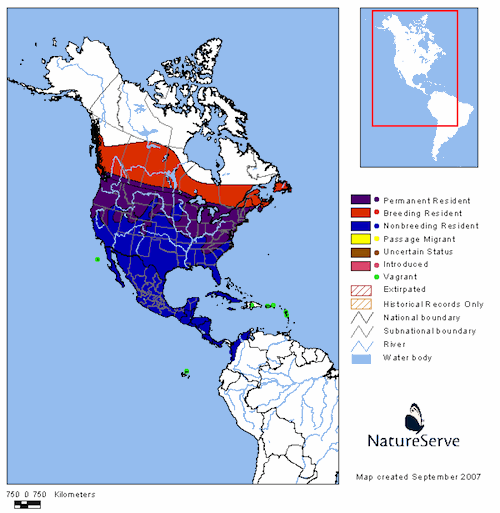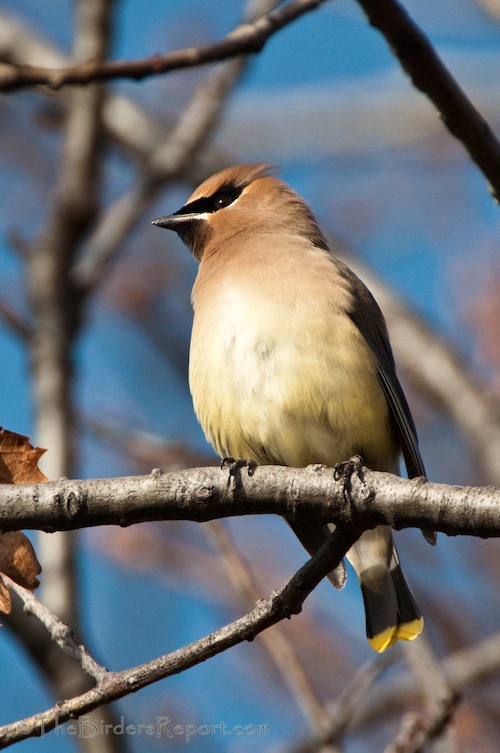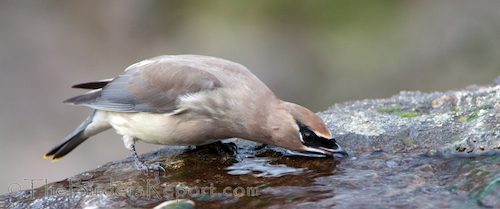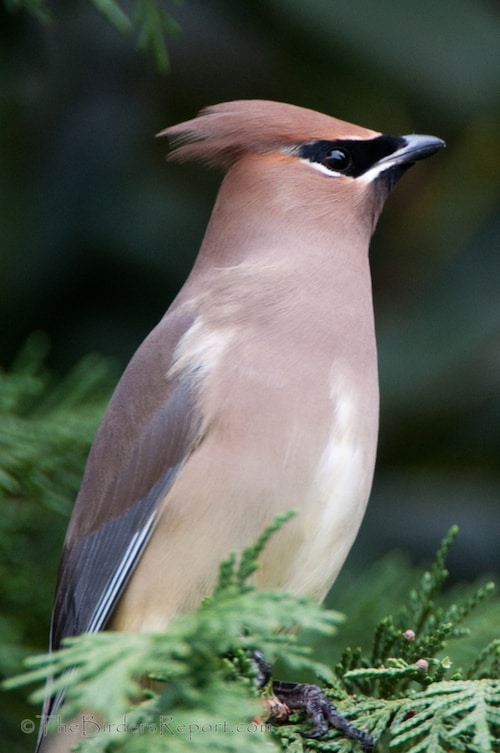
Cedar Waxwings (Bombycilla cedrorum) are seen here in Northern California every winter, but this year, they were seen in my yard for the first time! Click on photos for full sized images.

The mainstay of the Cedar Waxwing is fleshy fruits and during the winter their diet is almost completely fruit. This dependance on a fruit diet accounts for much of this bird’s migratory and wandering behavior. Range Map courtesy of NatureServe Explorer.

These birds visited my yard for the fruits of my Photinia bushes…

which placed them in a rather dark environment for photography.

However, after filling up on berries they would fly over to the oak trees to roost and preen in what sunshine there was to be had.

As the sun rose a bit higher in the sky and broke through the clouds, the Cedar Waxwings showed more color.

Waxwings get their name from the red, waxlike tips on the secondary flight-feathers of adult birds like the one seen in this photo.

Immature birds like this one, don’t attain the red tips until their second fall.

These red appendages on secondaries of Cedar Waxwings increase in number and size with the bird’s age. This bird with only a few short red tips foraging in the photinia is probably a young adult and, when the time comes, is most likely to breed with another bird of the same age1.

Pairs of older birds nest earlier and raise more young than do immature birds, suggesting that this plumage character is an important signal in mate choice and social organization1.
As I watched and photographed this flock of about fifteen Cedar Waxwings they would also hawk insects from the treetops…

and occasionally visit the waterfall and pond to drink.

After counting about 1,200 American Robins flying over as I photographed these waxwings in my back yard, I stopped by Turtle Bay the following day to see what birds were out and about.
Adjacent to Turtle Bay is the Redding Convention Center which has some red berry bush plantings nearby (if anyone knows what type of bush this is please leave a comment).
I snapped a few shots of these Cedar Waxwings there. This one waiting its turn in a maple tree…

another venturing out on the end of a branch…

and this one sneaking around in the shadows.

They were understandably being coy as an American Robin (Turdus migratorius) arrived at the berry bushes and began chasing the Waxwings off.

You know, Robins like berries too! But that’s another story.
Larry Jordan
Larry Jordan is an avid birder and amateur photographer living on the Pacific Flyway near the Central Valley of Northern California. He is a board member of his local Audubon Society and is a bird and wildlife conservationist. Larry contributes to several wildlife conservation organizations and is a BirdLife International "Species Champion." He is also Habitat Manager for the Burrowing Owl Conservation Network, an organization dedicated to the protection and restoration of the Western Burrowing Owl population in the United States. Larry has been blogging about birds since September of 2007 at TheBirdersReport.com

Leave a Reply